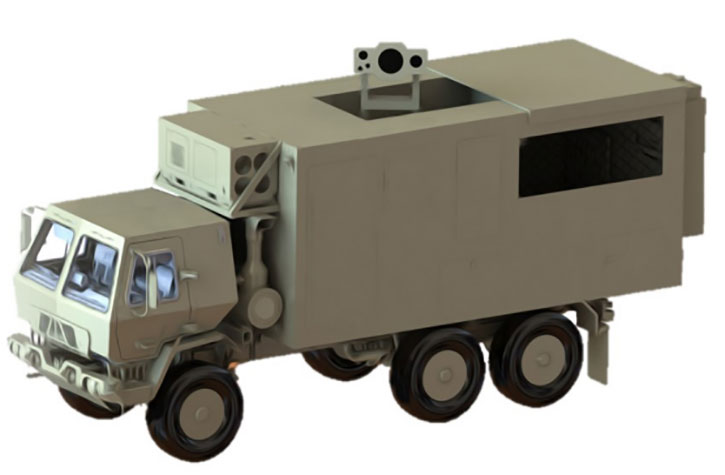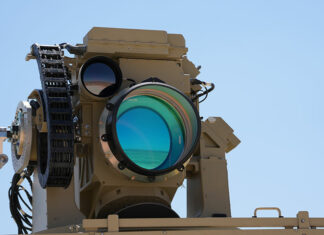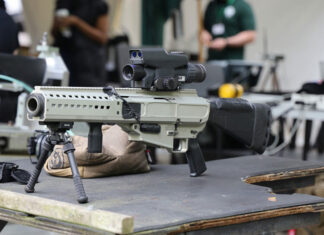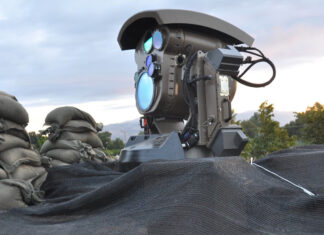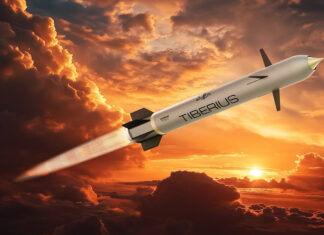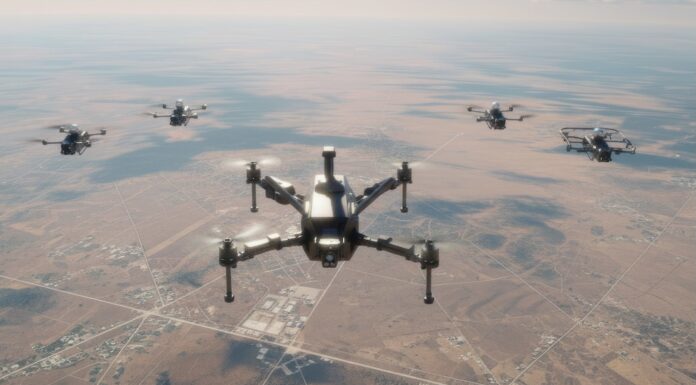The Raytheon Company and Dynetics are both developing laser weapon prototypes that will utilize 100 kW class laser weapons. One of the prototypes will be tested by the Army in 2022.
Each company received $10 million from the U.S. Army recently, to build a High Energy Laser Tactical Vehicle Demonstrator (HEL TVD) prototype based on the Army Oshkosh tactical FMTV truck. The winning contractor will be awarded a contract option to finish the design, build and integrate the laser weapon system onto an Army FMTV platform and conduct field testing at White Sands Missile Range in New Mexico.
The science and technology demonstration program is part of the Army’s Indirect Fire Protection Capability (IFPC) Increment 2 Block 2 (IFPC 2-I Blk 2) initiative designed to defeat drones, rockets, artillery, and mortars (C-RAM/UAS).
The Army’s Indirect Fire Protection Capability, Increment 2 — Intercept (IFPC Inc 2-I) is an acquisition program designed to provide a material solution to protect troops from cruise missiles, unmanned aerial systems (UAS), and rockets, artillery, and mortars (RAM). IFPC Inc 2-I has a Block 2 milestone decision in FY24 to add the counter-RAM capability to the program. To date, the program tested lasers at various intensities, from 2kW to 50 kW. In February this year, Lockheed Martin announced it completed the development of a single-beam 60 kW laser for the program. Lockheed Martin has teamed with Dynetics to mount a 100 kW laser on its HEL TVD. The laser uses Lockheed’s spectral beam-combined fiber laser that leverages know-how and experience gained from another vehicle-based laser – the Army’s Robust Electric Laser Initiative (RELI) program.
Raytheon’s 100 kW laser will be based on multi-beam fiber-laser design. The next phase will test the system with 100kW lasers, deemed adequate to defeat C-RAM targets in a timely manner.
Following the conclusion of the test and evaluation phase in early 2019 the Army plans to award a three-year system development, and demonstration contract estimated at $130 million, to build and integrate a weapon system. By the Fiscal year 2022, the HEL TVD will be demonstrated against a variety of targets, including lethal engagements.
This capability is managed in parallel to the Interim Mobile-SHORAD (IM-SHORAD) that will equip the Stryker brigades beginning 2020, but the two programs could be merges sometime in the future as the Army considers adding HEL capability to IM-SHORAD in the future.
The first mission is to protect U.S. and allied forces at fixed and semi-fixed bases. High energy lasers will complement conventional offensive and defensive weapons at a significantly lower cost per engagement than current systems. The high energy laser system represents very low operating costs, as it requires only fuel to complete its mission, with an average cost per kill of approximately $30. There is no ordnance logistics burden, as with conventional weapons.
This 390 w. text is an excerpt of the 582-w. article; Subscribe to read the full version
